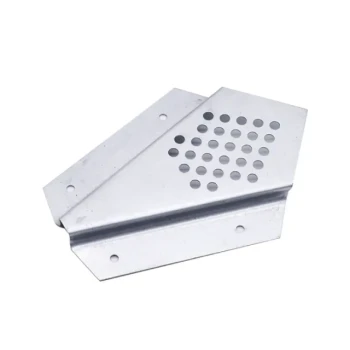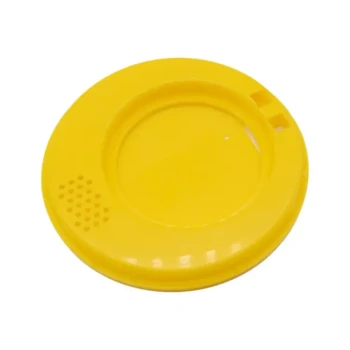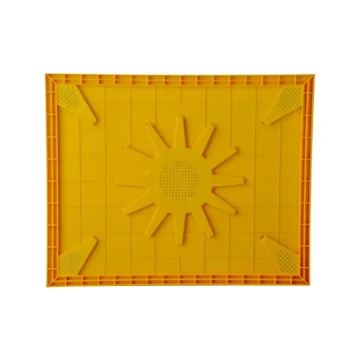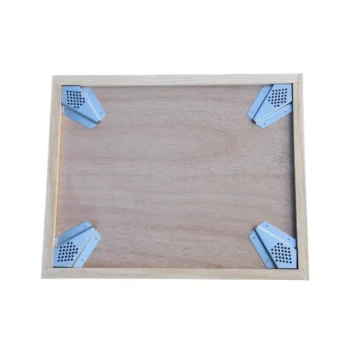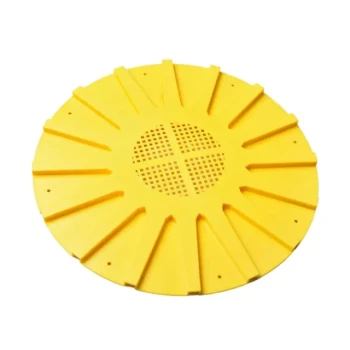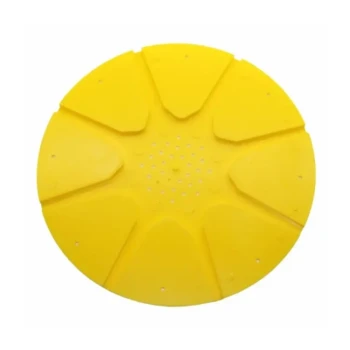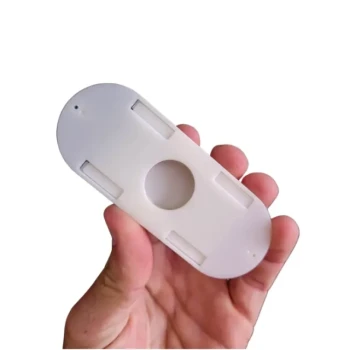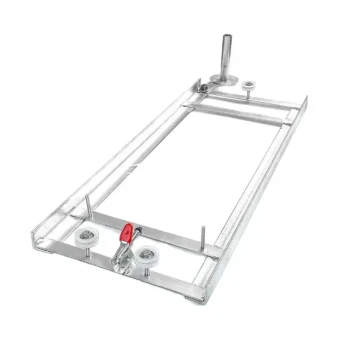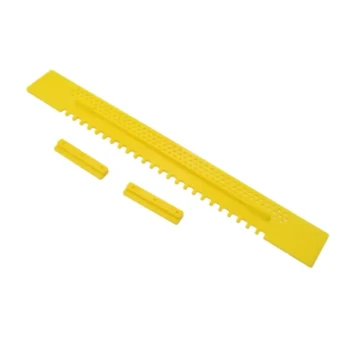To use a triangle escape board safely and effectively, you must install it with the triangle pointing down into the hive, leave it on for no more than 24 hours, and critically, first ensure there is no brood in the honey super you intend to clear. You should also wear standard protective gear, as a small population of bees will always remain.
A triangle escape board is a tool that leverages natural bee behavior to your advantage. Its success depends entirely on setting up the correct conditions and respecting its time-based limitations. Forgetting these principles is the primary reason this method fails.

How the Escape Board Works
To use the board correctly, you must first understand the simple principles that make it effective. It is not a brute-force tool but one that guides bees based on their instincts.
The One-Way Maze Principle
The triangle board creates a simple maze. Bees can easily walk from the honey super down through the triangular "escapes" into the main hive body below.
However, their natural navigation makes it extremely difficult for them to find the small entrance points to travel back up into the super. This creates a functional one-way door.
Leveraging Natural Bee Behavior
This tool works best during cooler temperatures, especially overnight. During these times, bees instinctively move downward to cluster for warmth in the main brood chamber.
The escape board facilitates this natural downward migration while preventing their return, leading to a honey super that is approximately 80% clear of bees.
Critical Precautions for Effective Use
Ignoring these steps is the most common source of failure. Each one is designed to prevent a specific problem that can render the board useless.
Pre-Flight Check: Ensure No Brood is Present
This is the most important check. Before installing the board, inspect the frames in your honey super. If you find any frames containing eggs, larvae, or capped brood, do not use the escape board.
Nurse bees have an overriding instinct to care for the young and will not abandon the brood, no matter the circumstance. They will remain in the super, defeating the purpose of the board.
Step 1: Install the Board Correctly
The orientation is non-negotiable. Place the escape board directly on top of the brood boxes and below the honey super you wish to clear.
The board must be positioned with the flat surface facing up (towards the honey super) and the triangle escape mechanism facing down (into the main hive). An incorrect orientation will trap the bees in the super.
Step 2: Seal All Other Entrances
Bees are resourceful. Once the escape board is in place, ensure the honey super above it is completely sealed from the outside.
Any cracks, gaps, or holes in the box or lid will be discovered by the bees, who will use them as a new entrance to get back to the honey.
Understanding the Trade-offs
The escape board is a gentle and effective method, but it is not a perfect solution. Understanding its limitations is key to a stress-free harvest.
The 24-Hour Rule
The board should be left on the hive for approximately 24 hours. This gives the bees enough time to migrate down into the brood chamber.
Leaving it on for longer is counterproductive. The bees will eventually discover how to navigate the maze in reverse and re-populate the super. In very cold weather, you can extend this to 48 hours, but no longer.
It's Not a 100% Solution
An escape board will not remove every single bee. You can expect it to clear around 80% of the population from the super.
You will still need to manage the remaining bees when you pull the frames, though the task will be significantly easier and less disruptive to the hive.
Always Wear Protective Gear
Because some bees will inevitably remain in the super, you must approach the harvest with the same safety precautions as always. Wearing your protective gear is essential.
Making the Right Choice for Your Harvest
Use these guidelines to decide if the escape board fits your specific situation and goal.
- If your primary focus is a gentle harvest: The escape board is one of the calmest methods, as it avoids chemicals or aggressive brushing that can harm or agitate bees.
- If your primary focus is efficiency: This tool is highly effective, but only if you verify the super is brood-free and you stick to the 24-hour timeline.
- If you find brood in your honey super: Do not use the escape board. You must revert to manually brushing the bees off each frame to protect the brood and clear the box.
Ultimately, using an escape board successfully means working with your bees' instincts, not against them.
Summary Table:
| Key Precaution | Critical Detail | Why It Matters |
|---|---|---|
| Check for Brood | Inspect honey super frames for eggs, larvae, or capped brood. | Nurse bees will not abandon brood, making the board ineffective. |
| Correct Installation | Triangle escape mechanism must face DOWN into the main hive body. | Incorrect orientation traps bees in the super. |
| 24-Hour Time Limit | Do not leave the board on for more than 24-48 hours. | Bees will learn to navigate back into the super if left too long. |
| Seal All Gaps | Ensure the honey super above the board has no other entrances. | Prevents bees from finding alternate routes back to the honey. |
| Wear Protective Gear | Always use standard beekeeping protective equipment. | A small population of bees will always remain in the super. |
Streamline Your Apiary Operations with HONESTBEE
Mastering tools like the triangle escape board is key to a efficient and gentle harvest. For commercial apiaries and equipment distributors, having reliable, high-quality supplies is the foundation of success.
HONESTBEE supplies beekeeping supplies and equipment to commercial apiaries and beekeeping equipment distributors through wholesale-focused operations. We provide the durable tools you need to work with your bees' instincts, not against them.
Let us help you enhance your harvest efficiency. Contact our wholesale team today to discuss your supply needs and discover how our products can support your operation's growth and productivity.
Visual Guide
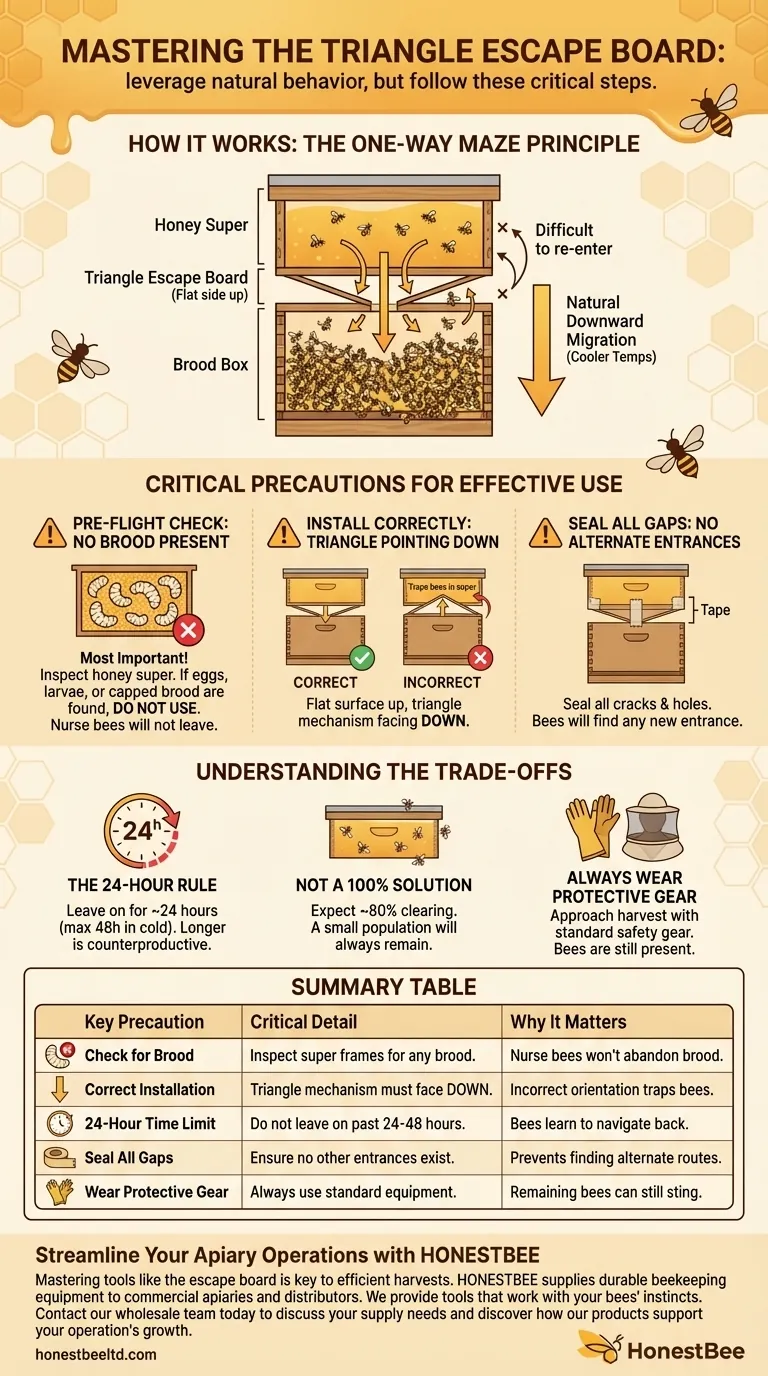
Related Products
- HONESTBEE Wooden Bee Escape Board with Triangle Mesh Design for Beekeeping
- Heavy Duty Metal Corner Bee Escape for Reliable Hive Clearing
- Circular Labyrinth Bee Escape for Efficient Hive Management
- High-Efficiency Diamond Maze Bee Escape for Clearing Supers
- HONESTBEE Multi Exit Plastic Bee Escape Board for Efficient Honey Harvesting
People Also Ask
- What is the recommended time to leave the triangle escape board installed before harvesting honey? A Guide to a Stress-Free Harvest
- What is the effectiveness of the Bee Escape Board? Achieve a Calm, 95% Bee-Free Honey Harvest
- Where should the triangle escape board be placed in the hive? Master a Gentle, Stress-Free Honey Harvest
- Are Triangular Escape Boards ready to use? Yes, and Here's How to Use Them Effectively
- What types of bee escape boards are available? Clear Your Supers Fast and Stress-Free

